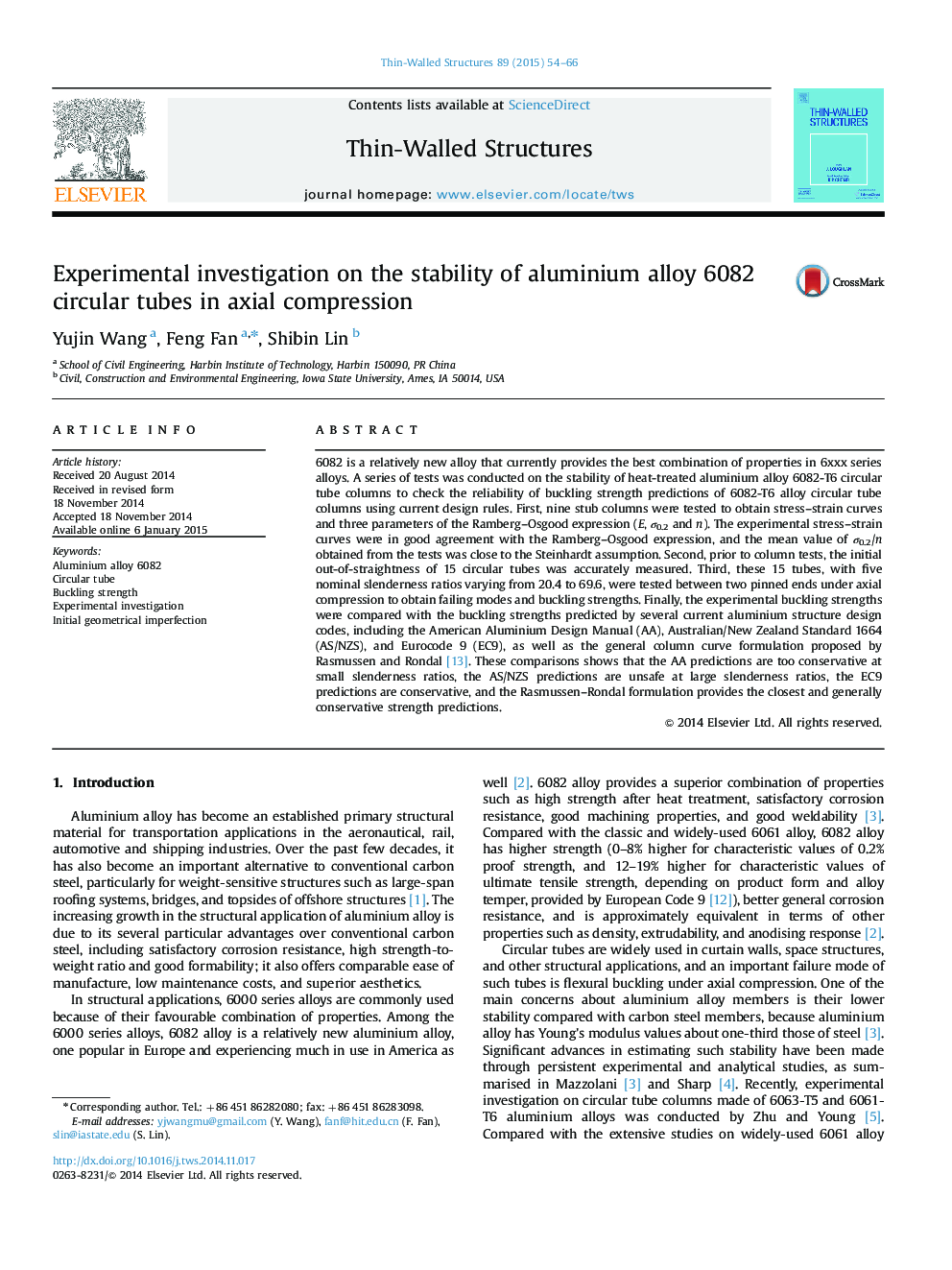| کد مقاله | کد نشریه | سال انتشار | مقاله انگلیسی | نسخه تمام متن |
|---|---|---|---|---|
| 308719 | 513563 | 2015 | 13 صفحه PDF | دانلود رایگان |
• An experimental investigation on the column strengths of 6082-T6 circular tubes is presented.
• A detailed measurement approach of initial out-of-straightness for circular tubes is presented.
• The column strength predictions using Aluminium Alloy Manual are conservative, but exceedingly conservative at small slenderness ratios.
• The column strength predictions using the Australian/New Zealand standard are conservative at small slenderness ratios, but unsafe at large slenderness ratios.
• The column strength predictions using European code 9 are conservative.
• The Rasmussen–Rondal formulation for mental column strength produces the closest and generally conservative strength predictions.
6082 is a relatively new alloy that currently provides the best combination of properties in 6xxx series alloys. A series of tests was conducted on the stability of heat-treated aluminium alloy 6082-T6 circular tube columns to check the reliability of buckling strength predictions of 6082-T6 alloy circular tube columns using current design rules. First, nine stub columns were tested to obtain stress–strain curves and three parameters of the Ramberg–Osgood expression (E, σ0.2 and n). The experimental stress–strain curves were in good agreement with the Ramberg–Osgood expression, and the mean value of σ0.2/n obtained from the tests was close to the Steinhardt assumption. Second, prior to column tests, the initial out-of-straightness of 15 circular tubes was accurately measured. Third, these 15 tubes, with five nominal slenderness ratios varying from 20.4 to 69.6, were tested between two pinned ends under axial compression to obtain failing modes and buckling strengths. Finally, the experimental buckling strengths were compared with the buckling strengths predicted by several current aluminium structure design codes, including the American Aluminium Design Manual (AA), Australian/New Zealand Standard 1664 (AS/NZS), and Eurocode 9 (EC9), as well as the general column curve formulation proposed by Rasmussen and Rondal [13]. These comparisons shows that the AA predictions are too conservative at small slenderness ratios, the AS/NZS predictions are unsafe at large slenderness ratios, the EC9 predictions are conservative, and the Rasmussen–Rondal formulation provides the closest and generally conservative strength predictions.
Journal: Thin-Walled Structures - Volume 89, April 2015, Pages 54–66
